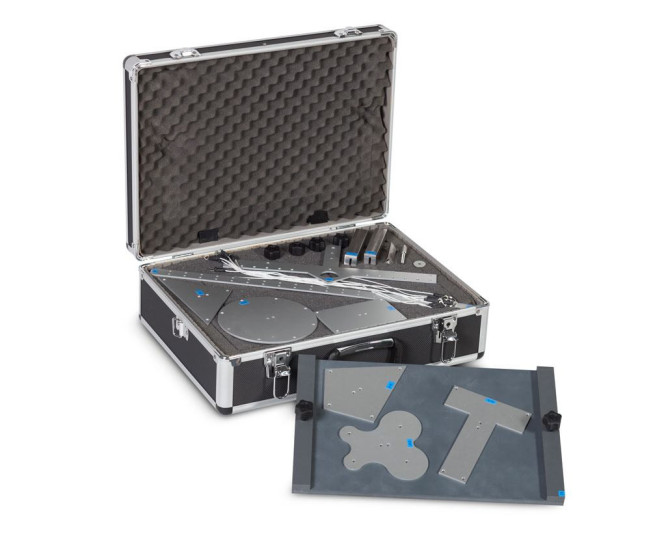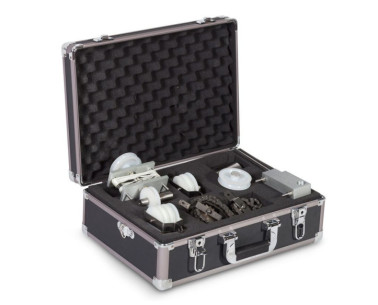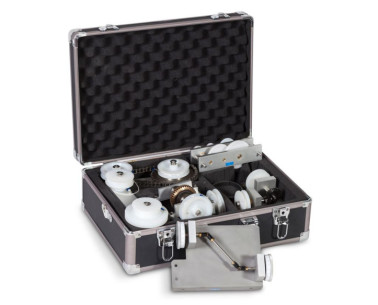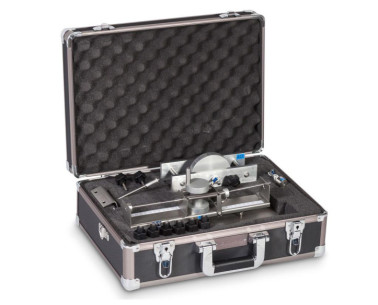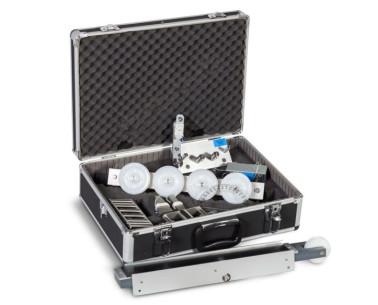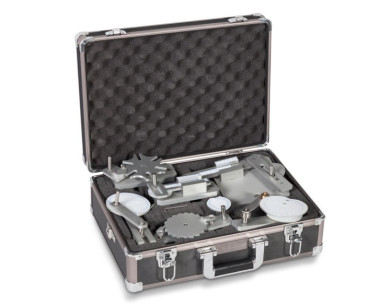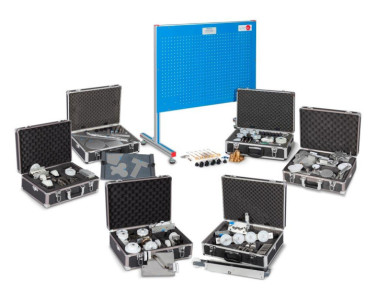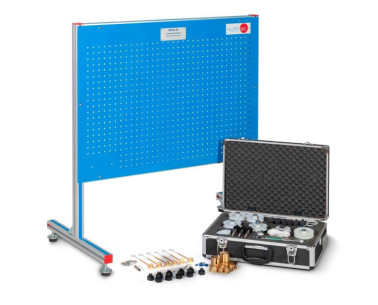MECA1 静力学実験
革新的なシステム
Statics is the part of Mechanics that studies any kind of structure or element in balance-equilibrium.
研究室
関連ニュース
概要
Statics is the part of Mechanics that studies any kind of structure or element in balance-equilibrium.
Basically the module consist on experiments in which the student shall learn to deduce the main principles of Statics and its most important applications.
演習と指導の慣行
マニュアルに含まれるガイド付き実習
- Centres of gravity (Centres of gravity (I) and Centres of gravity (II)): Specification of the centre of gravity of plates of different shapes using the simple pendulum and graphical methods.
- Triangle of forces. To test that three non-parallel forces in equilibrium acting in the same plane can be represented by a Triangle of forces.
- Parallelogram of forces. When three non-parallel forces in the same plane are in equilibrium, their lines of action meet at a point, and hence to show that the resultant of two forces can be found using the Parallelogram of forces.
- Polygon of forces. Verification of the fact that four or more forces in equilibrium acting on the same point, can be represented by a Polygon of forces.
- Principle of moments. Verification of the principle of moments for parallel and non parallel forces.
- The Pivot or beam balance. To demonstrate that the action of weighing with a beam balance or slide balance is based upon the principle of moments.
- Levers: To determine the mechanical advantage of various types of levers using the ratio resistance/power (W/P) and to verify that this is the same as the ratio between distances.
- Beam reaction forces. Verification of the fact that a distributed load applied over a beam may be considered as an equivalent concentrated load applied at the centre of gravity of the distributed load. Reactions located at supports due to the load acting on the simply supported beam may be calculated using the momentum principle, independent of the position of these beam supports.
利用可能な類似の機器
伝達実験
動力学実験
摩擦実験
特殊機構の実験
補完的な機器
基礎機械工学統合実験室:
LIMEBA用共通要素のパネルとケース
荷重昇降機構の実験
伝達実験
動力学実験
摩擦実験
特殊機構の実験
品質

アフターサービス

 クッキーの設定
クッキーの設定

